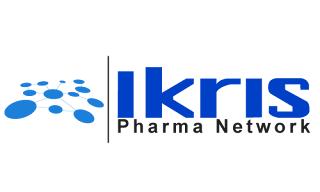Rheumatoid arthritis: Rheumatoid arthritis is a condition that can be responsible for causing pain, swelling and stiffness in the joints.
It is known as a condition of autoimmune, which means that our body's immune system gets confused and starts attacking our body’s healthy tissues. In the condition of RA, inflammation in the joints is the major complication.
Types: There are majorly two types of rheumatoid arthritis, which is listed as follows:
- Seropositive RA
- Seronegative RA
Symptoms: The major rheumatoid arthritis symptoms are:
- Joint pain
- Stiffness
- Joint swelling, warmth and redness
Some other symptoms may also include:
- Tiredness
- Lack of energy
- Not feeling hungry
- Weight loss
- Fever
- Sweating
- Dry eyes
- Chest pain
RA may be responsible for affecting any joint in the body, despite it often occurs in the tiny joints in the hands as well as feet first.
Causes: For rheumatoid arthritis causes some following can play a part in why someone has rheumatoid arthritis:
- Age
- Sex
- Genetics
- Weight
- Smoking
- Excess vitamin C
Rheumatoid Arthritis Treatment: In order to treat RA, there are a variety of treatments. The earlier the treatment is initiated, the more likely it is effective.
There are mainly 3 major ways in order to treat RA (Rheumatoid Arthritis):
- Drugs
- Physical therapies
- Surgery
Drugs: There are 4 major groups of drugs that are recommended in order to treat RA. These are as follows:
- Painkillers
- Non-steroidal anti-inflammatory drugs (NSAIDs)
- Steroid treatment (also known as corticosteroids)
- Disease-modifying anti-rheumatic drugs (DMARDs)
Effective Rheumatoid Arthritis Drugs: There are several drugs that are believed to work effectively for the rheumatoid arthritis cure.
Azathioprine (Conventional synthetic DMARD): Being a DMARD, azathioprine is prescribed in order to manage the signs and symptoms of rheumatoid arthritis. Corticosteroids and nonsteroidal anti-inflammatory medicines can be combined with azathioprine 50 mg, but use together with other DMARDs should be avoided.
The common adverse reactions due to this drug may include bone-marrow suppression and vomiting
Hydroxychloroquine (Conventional synthetic DMARD): Hydroxychloroquine can be used for the treatment of rheumatoid arthritis. It is consumed by mouth, often in the form of the hydroxychloroquine sulfate.
The common adverse reactions due to hydroxychloroquine may include headache, changes in vision, muscle weakness and vomiting.
Leflunomide (Conventional synthetic DMARD): Acts by inhibiting dihydroorotate dehydrogenase, Leflunomide, an immunosuppressive DMARD, is used in active moderate-to-severe rheumatoid arthritis.
The most common adverse reactions due to this medication may include; respiratory tract infections, diarrhea, high blood pressure, rash, hair loss, nausea, headache, abdominal pain, bronchitis, back pain, urinary tract infection, dizziness, indigestion, itchiness, loss of appetite, weight loss, cough, gastroenteritis, vomiting, allergic reaction, weakness, chest pain, dry skin and eczema.
Etanercept (Biologic; Anti-TNF): By interfering with the tumor necrosis factor, etanercept injection is used in order to treat rheumatoid arthritis.
The common adverse reactions may include blocked/runny nose, sore throat, feeling sick, vomiting, mild fever, headaches, dizziness, rash and stomach pain.
Adalimumab (Biologic; Anti-TNF): As a disease-modifying antirheumatic drug and monoclonal antibody, adalimumab injection is prescribed for the treatment of rheumatoid arthritis.
The common adverse reactions may include rash, upper respiratory tract infections, pain at the site of injection, and headache
Apart from all these medications, there are some other medications that are widely used for the management of rheumatoid arthritis. These are listed as follows:
- Infliximab
- Methotrexate
- Sulfasalazine
- Rituximab
- Baricitinib
- Tofacitinib
- Sarilumab
- Certolizumab pegol
- Golimumab
- Abatacept
- Tocilizumab
NOTE: The piece of information provided in this article is just for informational purposes and is not served as a substitute for the medical treatment, consultation, diagnosis, of a qualified healthcare practitioner.
FAQ's
What is the first sign of rheumatoid arthritis?
Stiffness, followed by pain and tenderness in the joints, typically is the first sign of RA.
How long does it take to diagnose RA (rheumatoid arthritis)?
Most of the time, it happens in the first a couple of years. Your healthcare practitioner may perform blood tests as well as X-rays in order to detect a diagnosis.
What are the 4 stages of rheumatoid arthritis?
As rheumatoid arthritis progresses, the body starts changing. Some changes are noticeable and you can feel, while others you cannot. Every stage of rheumatoid arthritis comes along with the different treatment goals.
Stage 1: It is an early stage of rheumatoid arthritis.
Stage 2: It is a moderate stage of rheumatoid arthritis.
Stage 3: It is a severe stage of rheumatoid arthritis.
Stage 4: It is an end-stage of rheumatoid arthritis.
Source:-Orginal content are here





No comments:
Post a Comment